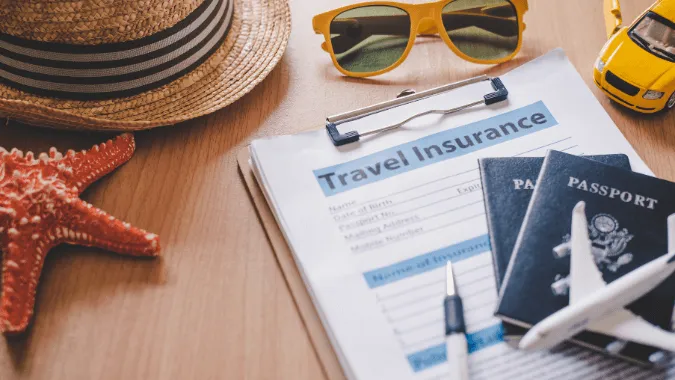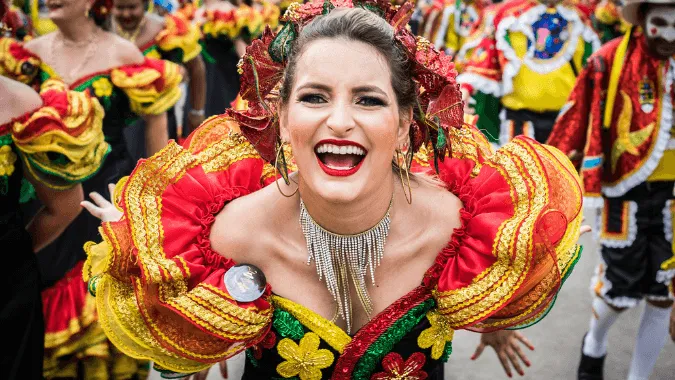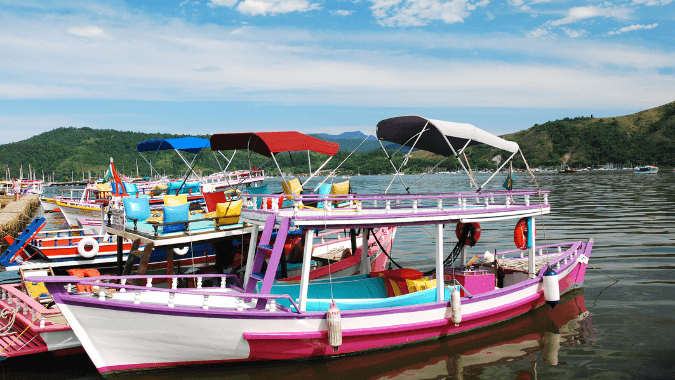Things to do
Gay Pride Parade 2019 in South America: Where, when, and how?
Tags:
south america
pride
June is Pride Month, a time of struggle and vindication for the LGBT+ (lesbian, gay, transexual, bisexual, and more) community throughout the world. Each year, major cities organize various activities to demand the guarantee of equal civil rights for sexual and gender minorities, and the most important event is the "Gay Pride Parade". [caption id="attachment_4275" align="aligncenter" width="675"]![Marcha del Orgullo Gay]() The rainbow-colored flag and the pink triangles show the abundance of Gay Pride Parades / Photo: GoMadridPride[/caption] The meaning of the word “pride” that defines this movement is that no person should be ashamed of their biological sex, sexual orientation, or gender identity. Linguistically, the word "pride" is intended to indicate that the dignity and affection each person has as deserving of respect: a feeling of satisfaction towards something of their own or close themselves that are considered valid and worthy. Just for the record, it all began in June of 1969, half a century ago, with the notorious Stonewall riots which consisted of a series of spontaneous demonstrations in response to a police raid that took place at the bar called Stonewall Inn in New York's Greenwich Village neighborhood York, against the gay patrons. These riots are cited as the first time in U.S. history that the LGBT+ community fought against the systematic persecution of homosexuals with the full consent of the government.
The rainbow-colored flag and the pink triangles show the abundance of Gay Pride Parades / Photo: GoMadridPride[/caption] The meaning of the word “pride” that defines this movement is that no person should be ashamed of their biological sex, sexual orientation, or gender identity. Linguistically, the word "pride" is intended to indicate that the dignity and affection each person has as deserving of respect: a feeling of satisfaction towards something of their own or close themselves that are considered valid and worthy. Just for the record, it all began in June of 1969, half a century ago, with the notorious Stonewall riots which consisted of a series of spontaneous demonstrations in response to a police raid that took place at the bar called Stonewall Inn in New York's Greenwich Village neighborhood York, against the gay patrons. These riots are cited as the first time in U.S. history that the LGBT+ community fought against the systematic persecution of homosexuals with the full consent of the government. ![Marcha del Orgullo Gay]() The Gay Pride Parade of São Paolo is the second-largest event in this Brazilian city, surpassed only by Formula / Photo: Revista Closet[/caption]
The Gay Pride Parade of São Paolo is the second-largest event in this Brazilian city, surpassed only by Formula / Photo: Revista Closet[/caption] ![Marcha del Orgullo Gay]() The Gay Pride Parade in Rio is the third most important public event in the city, after the New Year and Carnival / Photo: Viajeabrasil.com[/caption]
The Gay Pride Parade in Rio is the third most important public event in the city, after the New Year and Carnival / Photo: Viajeabrasil.com[/caption] ![Marcha del Orgullo Gay]() Around 50,000 people participate in the March for Full LGBT Citizenship in Bogota[/caption]
Around 50,000 people participate in the March for Full LGBT Citizenship in Bogota[/caption] ![Marcha del Orgullo Gay]() The Gay Pride Parade is Uruguay's second-largest annual event, following the March of Silence[/caption]
The Gay Pride Parade is Uruguay's second-largest annual event, following the March of Silence[/caption] ![Marcha del Orgullo Gay]() This Saturday the 29th, the streets of Quito will be filled with the colors, screams, and slogans of freedom and equality[/caption]
This Saturday the 29th, the streets of Quito will be filled with the colors, screams, and slogans of freedom and equality[/caption] ![Marcha del Orgullo Gay]() This year will be Lima’s 18th Pride Parade / Photo: Ana Victoria Pérez[/caption]
This year will be Lima’s 18th Pride Parade / Photo: Ana Victoria Pérez[/caption] ![Marcha del Orgullo Gay]() Buenos Aires is one of the most gay-friendly cities in South America and is in one of the countries in which the LGBT community receives the most support from the state / Photo: Infobae[/caption]
Buenos Aires is one of the most gay-friendly cities in South America and is in one of the countries in which the LGBT community receives the most support from the state / Photo: Infobae[/caption]
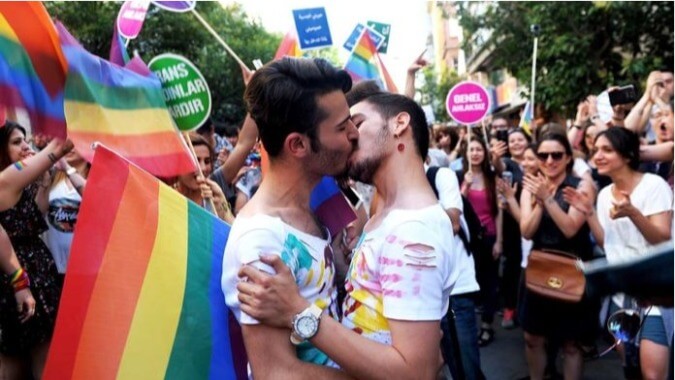 The rainbow-colored flag and the pink triangles show the abundance of Gay Pride Parades / Photo: GoMadridPride[/caption] The meaning of the word “pride” that defines this movement is that no person should be ashamed of their biological sex, sexual orientation, or gender identity. Linguistically, the word "pride" is intended to indicate that the dignity and affection each person has as deserving of respect: a feeling of satisfaction towards something of their own or close themselves that are considered valid and worthy. Just for the record, it all began in June of 1969, half a century ago, with the notorious Stonewall riots which consisted of a series of spontaneous demonstrations in response to a police raid that took place at the bar called Stonewall Inn in New York's Greenwich Village neighborhood York, against the gay patrons. These riots are cited as the first time in U.S. history that the LGBT+ community fought against the systematic persecution of homosexuals with the full consent of the government.
The rainbow-colored flag and the pink triangles show the abundance of Gay Pride Parades / Photo: GoMadridPride[/caption] The meaning of the word “pride” that defines this movement is that no person should be ashamed of their biological sex, sexual orientation, or gender identity. Linguistically, the word "pride" is intended to indicate that the dignity and affection each person has as deserving of respect: a feeling of satisfaction towards something of their own or close themselves that are considered valid and worthy. Just for the record, it all began in June of 1969, half a century ago, with the notorious Stonewall riots which consisted of a series of spontaneous demonstrations in response to a police raid that took place at the bar called Stonewall Inn in New York's Greenwich Village neighborhood York, against the gay patrons. These riots are cited as the first time in U.S. history that the LGBT+ community fought against the systematic persecution of homosexuals with the full consent of the government. Gay Pride Parade in South America
Although the majority of South American countries have more conservative attitudes towards homosexuality, mostly due to the strong influence of the Catholic Church, a significant number of these countries have developed laws that support the LGBT+ community. However, it’s not a secret that pretty much all of South America knows how to throw a party, especially when it comes to gay pride. This region hosts some of the world's largest celebrations to support the LGBT community in full color! That's why, in celebration of Gay Pride Day, we've put together a list of the biggest marches in South America.São Paulo - Brazil
The Gay Pride Parade in São Paulo took place last Sunday - after the religious Corpus Christi - bringing together some three million people who occupied the streets of Avenida Paulista, in the heart of São Paulo, where groups made up of the most diverse ages and styles paraded as they alternated between dance steps, kisses, hugs and screams against Jair Messias Bolsonaro, president of Brazil. The slogan for 2019 was "50 years of Stonewall, our conquests, our pride to be LGBT". This twenty-third edition of the São Paulo LGBT Pride was also the first to take place after a landmark ruling by the Supreme Court of Brazil ten days ago, which typified homophobia as a criminal offense similar to racism. For his part, in the organization of Pride 2019, the Mayor authorized the changing of pedestrian traffic lights on Avenida Paulista to temporarily exhibit homo affective couples instead of a single person. Also, several of the buildings on the sidewalks of the iconic route hung rainbow ornaments in their windows. This parade competes with that of New York City every year to see which is the biggest in the world. Officially, the activities last five days. However, there are about three weeks full of debates, movies, concerts, cultural events or flea markets in the street, and lots and lots of fun. Take note: Throughout these next three weeks of activities, we recommend visiting The Week, the largest and busiest gay club in Brazil. [caption id="attachment_4276" align="aligncenter" width="675"]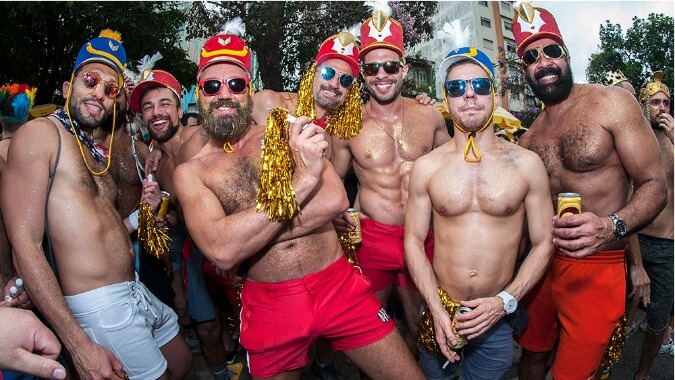 The Gay Pride Parade of São Paolo is the second-largest event in this Brazilian city, surpassed only by Formula / Photo: Revista Closet[/caption]
The Gay Pride Parade of São Paolo is the second-largest event in this Brazilian city, surpassed only by Formula / Photo: Revista Closet[/caption] Rio de Janeiro - Brazil
Rio de Janeiro's Gay Pride Parade, though not as big as that of São Paulo, is just as festive. The parade in this city is a large and colorful party on the famous Copacabana beach. There you will find a carnival atmosphere and samba spirit throughout the city. More than one million people from all over Brazil will fill Copacabana beach on October 13th (the date hasn’t been officially confirmed yet) to kiss, dance, and express their rejection of homophobia. The celebrations last until the early hours of the next day, and different neighborhoods - such as the district of Madureira, in the north of Rio - even have their own mini parades that take place along with the main one. Take note: After the main Gay Pride Parade, partygoers will head to the Papa G club, where the crowd dances in the streets until dawn. [caption id="attachment_4277" align="aligncenter" width="675"] The Gay Pride Parade in Rio is the third most important public event in the city, after the New Year and Carnival / Photo: Viajeabrasil.com[/caption]
The Gay Pride Parade in Rio is the third most important public event in the city, after the New Year and Carnival / Photo: Viajeabrasil.com[/caption] Bogota- Colombia
Colombia is a country that has not been oblivious to the celebration of Gay Pride Day, in fact, Bogota was the pioneer city with its first celebration taking place 23 years ago. Following Bogota, most South American capitals joined in to replicate and contribute to this cry for equality. The first gay march took place on June 28, 1982, with only 32 people. Currently, the Bogota march is known as the March for Full LGBT Citizenship and around 50,000 people participate. Along with New York, the capital of Colombia’s LGBT Pride Parade will be celebrating with the motto “I choose to be, I wish to live". According to the organizers of the event, it will begin on June 30 at 12:30 in the Bogotá National Park and this meeting will end up in the Plaza de Bolívar. Take note: Bogota is home to South America's largest gay club, Theatron, where partygoers will enjoy the biggest event of this celebration; the huge nightclub complex has 13 different gay clubs spread over 5 floors and can accommodate about 5,000 people. Each has its own theme: one room is dedicated to 80s hits, another to salsa music, one exclusively for men, another only for women, and so much more! [caption id="attachment_4278" align="aligncenter" width="675"]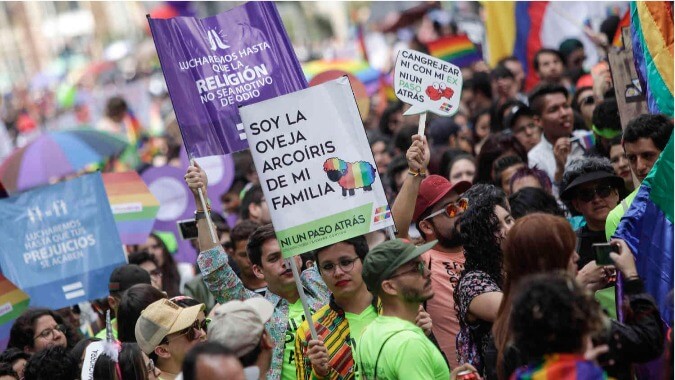 Around 50,000 people participate in the March for Full LGBT Citizenship in Bogota[/caption]
Around 50,000 people participate in the March for Full LGBT Citizenship in Bogota[/caption] Montevideo - Uruguay
Uruguay seems to have been doing things right when it comes to diversity and equal rights. In fact, it was the second Latin American country to approve marriage equality. Every June 28, Uruguay, like many other countries, celebrates international LGBT Pride Day and Montevideo celebrates Pride Week. However, due to the fact that June is in the winter, the Gay Pride Parade has been held on the last Friday of September since 2005. It is Uruguay's annual event with the second-largest amount of people, following the March of Silence, and was declared of ministerial interest by MIDES (Ministry of Social Development) in 2012. Currently, it begins in Plaza Independencia, where the "Pre-March" (with activities and stands before the departure time) is also organized and ends at the promenade of the Faculty of Law of the University of the Republic. Take Note: Its growing popularity is one of the reasons why the march is also taking place in other cities of Uruguay, such as in Colonia del Sacramento, in the cities of Las Piedras and Santa Lucia of the region of Canelones, and in the cities of Minas and José Pedro Varela the one in Lavalleja region. [caption id="attachment_4279" align="aligncenter" width="660"] The Gay Pride Parade is Uruguay's second-largest annual event, following the March of Silence[/caption]
The Gay Pride Parade is Uruguay's second-largest annual event, following the March of Silence[/caption] Quito - Ecuador
In some countries such as Ecuador, the legal framework insists on classifying the LGBT community as second-class citizens by denying them access to adoption. However, the enormous efforts of the Ecuadorian community succeeded in convincing the Constitutional Court of Ecuador (EEC) on 12 June to approve equal marriage with 5 votes in favor. However, the fight continues and Quito has more and more new challenges facing them, 20 years after homosexuality was decriminalized in the Andean country. In addition to the symbolic taking of the streets, there are planned cycles of cinema, art, debate, and other local endeavors in order to bring attention to its members and activists. Take note: This Saturday, June 29, starting at 3:00 on Guayaquil street, in the historic center of Quito, the March for LGBTIQ Pride will be held. With posters, flags, heels, costumes and a lot of glitters, around ten thousand people will demand that their rights be respected. [caption id="attachment_4280" align="aligncenter" width="675"]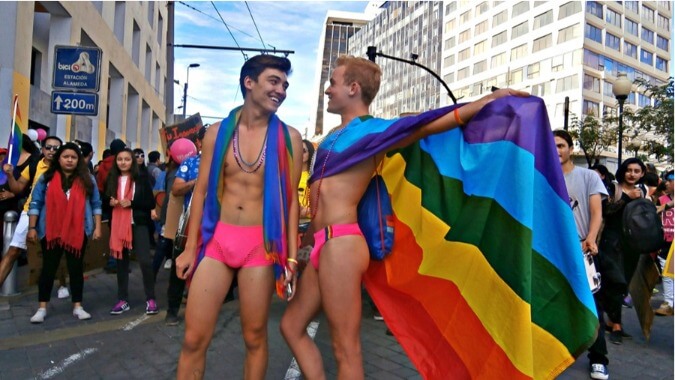 This Saturday the 29th, the streets of Quito will be filled with the colors, screams, and slogans of freedom and equality[/caption]
This Saturday the 29th, the streets of Quito will be filled with the colors, screams, and slogans of freedom and equality[/caption] Lima - Peru
In Lima, the capital of Peru, the 28th Gay Pride Parade will be held on Saturday, June 29 starting at 2:00 on the Campo de Mars, on the avenue of Peruanidad. It will continue along the avenues Guzmán Blanco, Garcilaso de la Vega, Nicolás de Piérola until finally reaching the emblematic Plaza San Martín, in the center of Lima. According to the social media of its organizer, the purpose is to "seek equality and respect for sexual and gender diversity" in Peru. [caption id="attachment_4282" align="aligncenter" width="675"]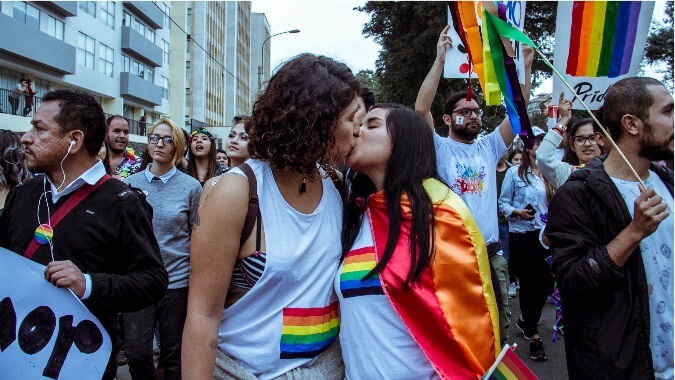 This year will be Lima’s 18th Pride Parade / Photo: Ana Victoria Pérez[/caption]
This year will be Lima’s 18th Pride Parade / Photo: Ana Victoria Pérez[/caption] Special Case: Buenos Aires- Argentina
Argentina celebrates Gay Pride Day and the activities of the Gay Pride Parade on a Saturday in November, commemorating the creation of "Our World", the first gay group to operate in the country in 1967. The Argentine nation was the first Latin American country to legalize gay marriage in July 2010, including full adoption rights. Since 2012 the changing of your gender is completely legal and anti-discrimination laws are in full force in Rosario and in the great capital, Buenos Aires. The gayest city in Latin America according to the British LGBT awards, Buenos Aires is the host of the largest celebration of diversity in November, with a week of LGBT festivities and the annual pride parade on Saturday, November 17. Take note: If you want to take part in the Gay Pride Day party, you have to visit the Glam Club, located in Recoleta; the Sitges bar, in Palermo; the Contramano Club, in Recoleta; and the Pride Café, in the neighborhood of San Telmo. [caption id="attachment_4284" align="aligncenter" width="675"] Buenos Aires is one of the most gay-friendly cities in South America and is in one of the countries in which the LGBT community receives the most support from the state / Photo: Infobae[/caption]
Buenos Aires is one of the most gay-friendly cities in South America and is in one of the countries in which the LGBT community receives the most support from the state / Photo: Infobae[/caption] …
Without a doubt, the struggle to obtain LGBT rights is a global cause faced with objections and suspicion in some parts of the world. That's why the Google doodle for the anniversary of the pride celebration is not universal and is reduced to only certain countries. In the Americas, it appears in Argentina, Chile, Peru, the United States, and Canada. It can be seen in Western Europe, Romania, India, South Africa, Australia, and New Zealand. However, it is not in Russia, Mexico, Brazil, Central America, and most African countries. At Daytours4u we believe we all can make a difference towards having a world without discrimination. That's why we join the various campaigns and actions that fight for the rights of the LGBT community, and we offer inclusive services that correspond to our values of respect and equality. If you liked this article, you might be interested in these ones as well: LGBT Pride Day: 8 gay-friendly tourist experiences to do in South America Gay-Friendly Places in Buenos Aires Why is Uruguay the best LGBT destination in South America?By: Nathaly Bosch, Venezuelan, social communicator by profession and curious traveler by choice. Spanish editor for Daytours4u.
Tags:
south america
pride
Daytours4u © 2012-2019. Use of this website constitutes acceptance of the Terms & Conditions.

